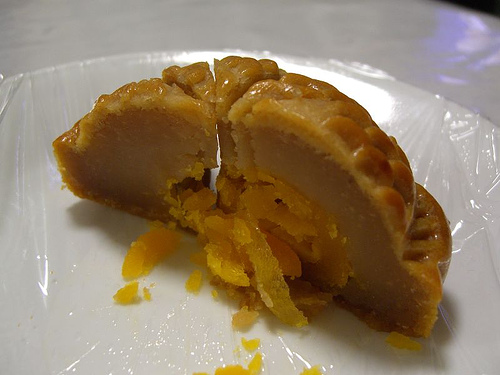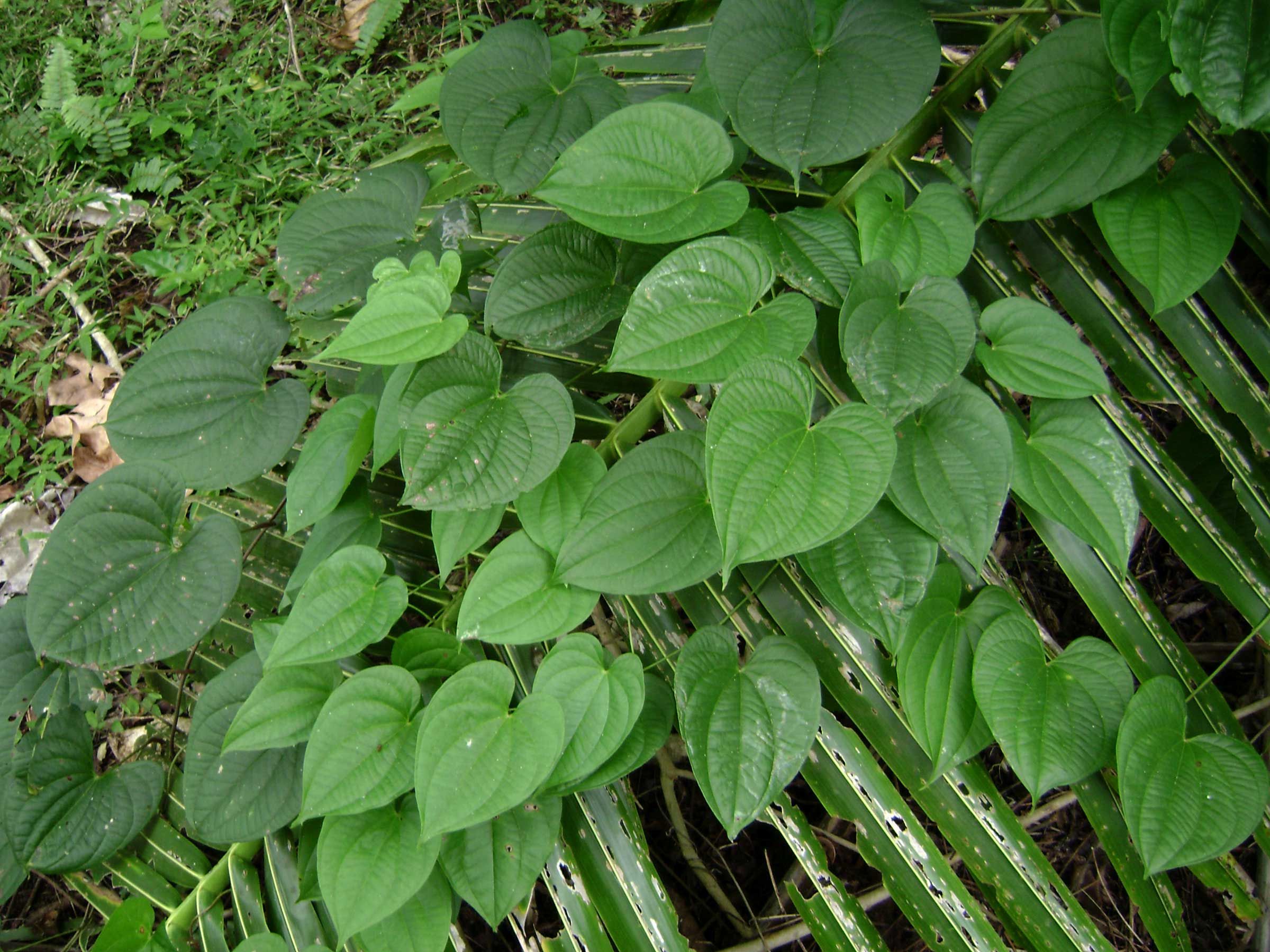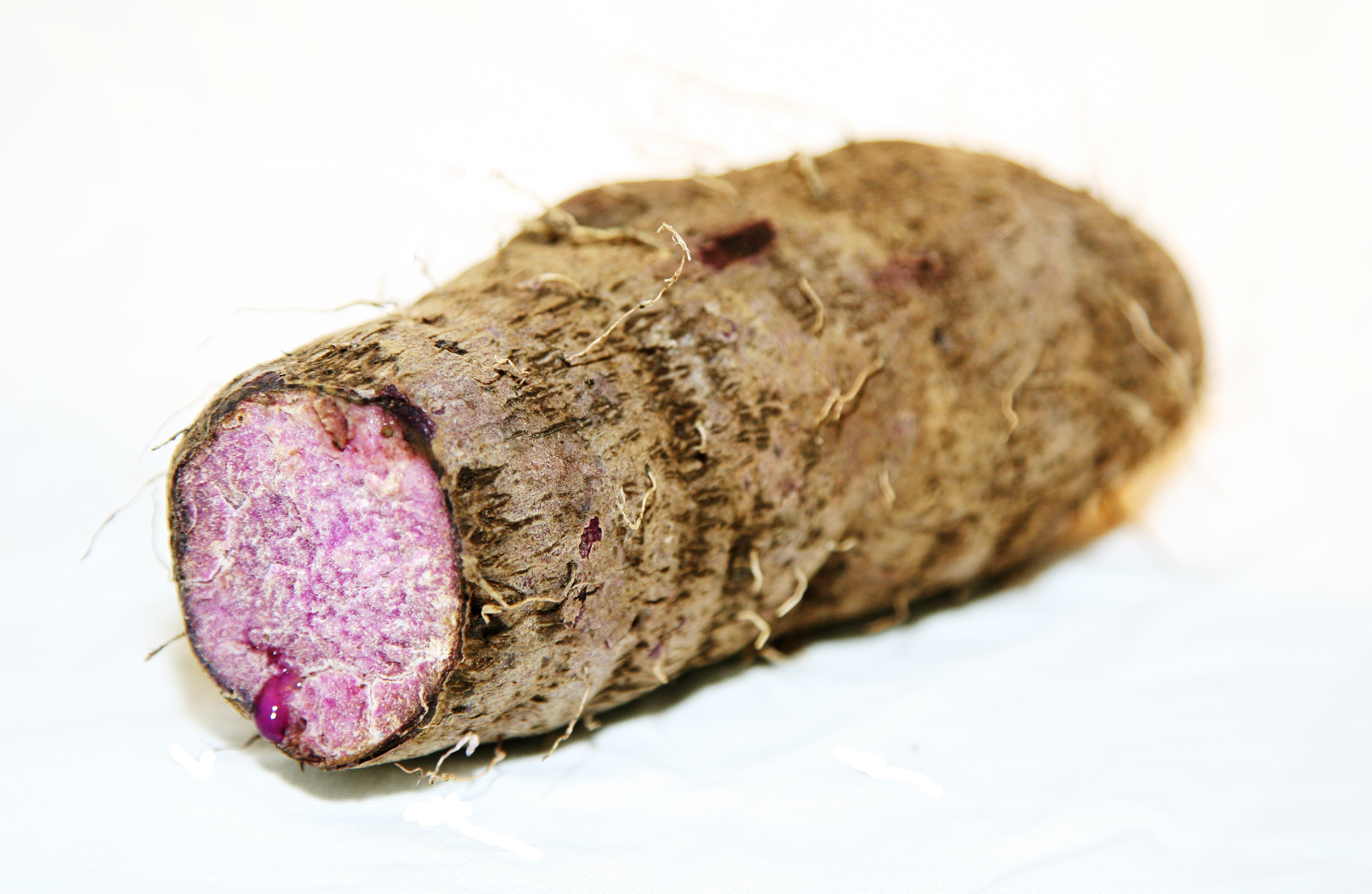|
Piaya (food)
A ''piaya'' ( Hiligaynon: ''piyaya'', ; Spanish: ''piaya'', ) is a muscovado-filled unleavened flatbread from the Philippines especially common in Negros Occidental where it is a popular delicacy. It is made by filling dough with a mixture of muscovado and water. The filled dough is then flattened with a rolling pin, sprinkled with sesame seeds and baked on a griddle. Piaya is best eaten warm. Variations The traditional sweet filling made of muscovado has other alternatives, including ''ube'' and mango. A ''piayito'' ( Hiligaynon: ''piyayito'') is a tiny version of the ''piaya'' and is thin and crispy. File:Piaya baking on a grill.jpg, Piaya being baked on a griddle File:Freshly baked piaya.jpg, Freshly-baked piaya File:Piaya flatbread (Philippines) 01.jpg, Ube and muscovado piaya See also * Bakpia * Bánh pía * Mooncake A mooncake () is a Chinese bakery product traditionally eaten during the Mid-Autumn Festival (中秋節). The festival is about lunar ... [...More Info...] [...Related Items...] OR: [Wikipedia] [Google] [Baidu] |
Philippines
The Philippines (; fil, Pilipinas, links=no), officially the Republic of the Philippines ( fil, Republika ng Pilipinas, links=no), * bik, Republika kan Filipinas * ceb, Republika sa Pilipinas * cbk, República de Filipinas * hil, Republika sang Filipinas * ibg, Republika nat Filipinas * ilo, Republika ti Filipinas * ivv, Republika nu Filipinas * pam, Republika ning Filipinas * krj, Republika kang Pilipinas * mdh, Republika nu Pilipinas * mrw, Republika a Pilipinas * pag, Republika na Filipinas * xsb, Republika nin Pilipinas * sgd, Republika nan Pilipinas * tgl, Republika ng Pilipinas * tsg, Republika sin Pilipinas * war, Republika han Pilipinas * yka, Republika si Pilipinas In the recognized optional languages of the Philippines: * es, República de las Filipinas * ar, جمهورية الفلبين, Jumhūriyyat al-Filibbīn is an archipelagic country in Southeast Asia. It is situated in the western Pacific Ocean and consists of around 7,641 islands t ... [...More Info...] [...Related Items...] OR: [Wikipedia] [Google] [Baidu] |
Rolling Pin
Rolling is a type of motion that combines rotation (commonly, of an axially symmetric object) and translation of that object with respect to a surface (either one or the other moves), such that, if ideal conditions exist, the two are in contact with each other without sliding. Rolling where there is no sliding is referred to as ''pure rolling''. By definition, there is no sliding when there is a frame of reference in which all points of contact on the rolling object have the same velocity as their counterparts on the surface on which the object rolls; in particular, for a frame of reference in which the rolling plane is at rest (see animation), the instantaneous velocity of all the points of contact (e.g., a generating line segment of a cylinder) of the rolling object is zero. In practice, due to small deformations near the contact area, some sliding and energy dissipation occurs. Nevertheless, the resulting rolling resistance is much lower than sliding friction, and thus, rol ... [...More Info...] [...Related Items...] OR: [Wikipedia] [Google] [Baidu] |
Philippine Pastries
The Philippines (; fil, Pilipinas, links=no), officially the Republic of the Philippines ( fil, Republika ng Pilipinas, links=no), * bik, Republika kan Filipinas * ceb, Republika sa Pilipinas * cbk, República de Filipinas * hil, Republika sang Filipinas * ibg, Republika nat Filipinas * ilo, Republika ti Filipinas * ivv, Republika nu Filipinas * pam, Republika ning Filipinas * krj, Republika kang Pilipinas * mdh, Republika nu Pilipinas * mrw, Republika a Pilipinas * pag, Republika na Filipinas * xsb, Republika nin Pilipinas * sgd, Republika nan Pilipinas * tgl, Republika ng Pilipinas * tsg, Republika sin Pilipinas * war, Republika han Pilipinas * yka, Republika si Pilipinas In the recognized optional languages of the Philippines: * es, República de las Filipinas * ar, جمهورية الفلبين, Jumhūriyyat al-Filibbīn is an archipelagic country in Southeast Asia. It is situated in the western Pacific Ocean and consists of around 7,641 islands t ... [...More Info...] [...Related Items...] OR: [Wikipedia] [Google] [Baidu] |
Mooncake
A mooncake () is a Chinese bakery product traditionally eaten during the Mid-Autumn Festival (中秋節). The festival is about lunar appreciation and Moon watching, and mooncakes are regarded as a delicacy. Mooncakes are offered between friends or on family gatherings while celebrating the festival. The Mid-Autumn Festival is widely regarded as one of the four most important Chinese festivals. There are numerous varieties of mooncakes consumed within China and outside of China in overseas Chinese communities. The Cantonese mooncake is the most famous variety. A traditional Cantonese mooncake is a round pastry, measuring about in diameter and thick, with a rich thick filling usually made from lotus seed paste (other typical fillings include red bean paste or mixed nuts) surrounded by a thin, 2–3 mm (approximately 1/8 of an inch) crust and may contain yolks from salted duck eggs. Mooncakes are usually eaten in small wedges, accompanied by tea. Today, it is ... [...More Info...] [...Related Items...] OR: [Wikipedia] [Google] [Baidu] |
Bánh Pía
Bánh bía, sometimes spelled bánh pía, is a type of Vietnamese cuisine bánh (translates loosely as "cake" or "bread"). A Suzhou style mooncake adapted from Teochew cuisine. The Vietnamese name comes from the Teochew word for pastry, "pia". In Saigon, the pastry is called “bánh bía” while in Sóc Trăng and Vũng Thơm it is known by "bánh Pía". Some Vietnamese call it bánh lột da, which translates to "peeling flakes pastry", and those from the Bến Tre region call it bánh bao chi, which is the name for Mochi is a Japanese rice cake made of , a short-grain japonica glutinous rice, and sometimes other ingredients such as water, sugar, and cornstarch. The rice is pounded into paste and molded into the desired shape. In Japan, it is traditionally ma ... elsewhere in Vietnam. Popular fillings include durian, shredded pork fat, salted egg yolk, mung bean paste, taro and coconut. References Teochew cuisine Vietnamese pastries Bánh Stuffed desser ... [...More Info...] [...Related Items...] OR: [Wikipedia] [Google] [Baidu] |
Bakpia
Bakpia ( jv, ꦧꦏ꧀ꦥꦶꦪ, bakpia; - the name it is known by in Indonesia) or Hopia ( - the name it is known by in the Philippines) is a popular Indonesian and Philippine bean-filled moon cake-like pastry originally introduced by Fujianese immigrants in the urban centers of both nations around the turn of the twentieth century. It is a widely available inexpensive treat and a favoured gift for families, friends and relatives. In Indonesia, it is also widely known as bakpia pathok, named after a suburb of Yogyakarta which specialises in the pastry. These sweet rolls are similar to bigger Indonesian ''pia'', the only difference being the size. Types of dough Flaky type The flaky type of ''bakpia'' uses Chinese puff pastry. Clear examples of this can be seen in China (especially Macau), Taiwan and countries with established Chinese diaspora communities such as Trinidad and Tobago and Guyana making this type the authentic Chinese ''hopia''. In addition, there is mor ... [...More Info...] [...Related Items...] OR: [Wikipedia] [Google] [Baidu] |
Purple Yam
''Dioscorea alata'', also known as purple yam, ube (, ), or greater yam, among many other names, is a species of yam (a tuber). The tubers are usually a vivid violet-purple to bright lavender in color (hence the common name), but some range in color from cream to plain white. It is sometimes confused with taro and the Okinawa sweet potato (''Ipomoea batatas'' cv. Ayamurasaki), although ''D. alata'' is also grown in Okinawa, where it is known as . With its origins in the Asian tropics, ''D. alata'' has been known to humans since ancient times. Names Because it has become naturalized following its origins in Asia, specifically the Philippines, through tropical South America, and the southeastern U.S., ''D. alata'' is referred to by many different names in these regions. In English alone, aside from purple yam, other common names include ten-months yam, water yam, white yam, winged yam, violet yam, Guyana arrowroot, or simply yam. History of cultivation ''Dioscorea alata'' ... [...More Info...] [...Related Items...] OR: [Wikipedia] [Google] [Baidu] |
Mango
A mango is an edible stone fruit produced by the tropical tree '' Mangifera indica''. It is believed to have originated in the region between northwestern Myanmar, Bangladesh, and northeastern India. ''M. indica'' has been cultivated in South and Southeast Asia since ancient times resulting in two types of modern mango cultivars: the "Indian type" and the "Southeast Asian type". Other species in the genus ''Mangifera'' also produce edible fruits that are also called "mangoes", the majority of which are found in the Malesian ecoregion. Worldwide, there are several hundred cultivars of mango. Depending on the cultivar, mango fruit varies in size, shape, sweetness, skin color, and flesh color which may be pale yellow, gold, green, or orange. Mango is the national fruit of India, Pakistan and the Philippines, while the mango tree is the national tree of Bangladesh. Etymology The English word ''mango'' (plural "mangoes" or "mangos") originated in the 16th century from the ... [...More Info...] [...Related Items...] OR: [Wikipedia] [Google] [Baidu] |
Dioscorea Alata
''Dioscorea alata'', also known as purple yam, ube (, ), or greater yam, among many other names, is a species of yam (a tuber). The tubers are usually a vivid violet-purple to bright lavender in color (hence the common name), but some range in color from cream to plain white. It is sometimes confused with taro and the Okinawa sweet potato (''Ipomoea batatas'' cv. Ayamurasaki), although ''D. alata'' is also grown in Okinawa, where it is known as . With its origins in the Asian tropics, ''D. alata'' has been known to humans since ancient times. Names Because it has become naturalized following its origins in Asia, specifically the Philippines, through tropical South America, and the southeastern U.S., ''D. alata'' is referred to by many different names in these regions. In English alone, aside from purple yam, other common names include ten-months yam, water yam, white yam, winged yam, violet yam, Guyana arrowroot, or simply yam. History of cultivation ''Dioscorea alata'' ... [...More Info...] [...Related Items...] OR: [Wikipedia] [Google] [Baidu] |
Griddle
A griddle, in the UK also called a girdle, is a cooking device consisting mainly of a broad, usually flat cooking surface. Nowadays it can be either a movable metal pan- or plate-like utensil, a flat heated cooking surface built into a stove or kitchen range, or a compact cooking machine with its own heating system attached to an integrated griddle acting as a cooktop. A traditional griddle can either be a brick slab or tablet, or a flat or curved metal disc, while in industrialized countries a griddle is most commonly a flat metal plate. A griddle can have both residential and commercial applications, and can be heated directly or indirectly. The heating can be supplied either by a flame fuelled by wood, coal, or gas; or by electrical elements. Commercial griddles run on electricity, natural gas or propane. [...More Info...] [...Related Items...] OR: [Wikipedia] [Google] [Baidu] |
Sesame
Sesame ( or ; ''Sesamum indicum'') is a flowering plant in the genus ''Sesamum'', also called benne. Numerous wild relatives occur in Africa and a smaller number in India. It is widely naturalized in tropical regions around the world and is cultivated for its edible seeds, which grow in pods. World production in 2018 was , with Sudan, Myanmar, and India as the largest producers. Sesame seed is one of the oldest oilseed crops known, domesticated well over 3,000 years ago. ''Sesamum'' has many other species, most being wild and native to sub-Saharan Africa. ''S. indicum,'' the cultivated type, originated in India. It tolerates drought conditions well, growing where other crops fail. Sesame has one of the highest oil contents of any seed. With a rich, nutty flavor, it is a common ingredient in cuisines around the world. Like other foods, it can trigger allergic reactions in some people. Etymology The word "sesame" is from Latin ''sesamum'' and Greek σήσαμον : ''sēsamon' ... [...More Info...] [...Related Items...] OR: [Wikipedia] [Google] [Baidu] |
Dough
Dough is a thick, malleable, sometimes elastic paste made from grains or from leguminous or chestnut crops. Dough is typically made by mixing flour with a small amount of water or other liquid and sometimes includes yeast or other leavening agents, as well as ingredients such as fats or flavorings. Making and shaping dough begins the preparation of a wide variety of foodstuffs, particularly breads and bread-based items, but also including biscuits, cakes, cookies, dumplings, flatbreads, noodles, pasta, pastry, pizza, piecrusts, and similar items. Dough can be made from a wide variety of flour, commonly wheat and rye but also maize, rice, legumes, almonds, and other cereals or crops. Types of dough Doughs vary widely depending on ingredients, the desired end product, the leavening agent (particularly whether the dough is based on yeast or not), how the dough is mixed (whether quickly mixed or kneaded and left to rise), and cooking or baking technique. The ... [...More Info...] [...Related Items...] OR: [Wikipedia] [Google] [Baidu] |


%2C_Philippines.jpg)





